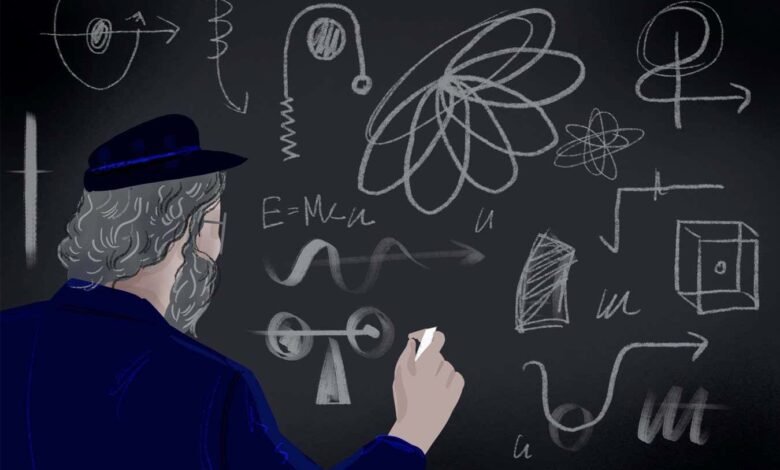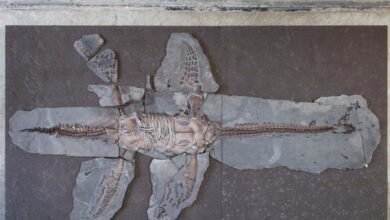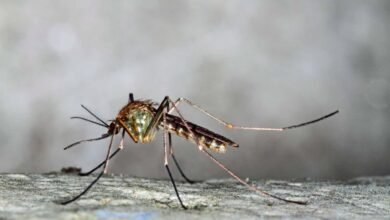George R. R. Martin finally finishes… a physics paper


Feedback is New Scientist’s popular sideways look at the latest science and technology news. You can submit items you believe may amuse readers to Feedback by emailing feedback@newscientist.com
A game of (wild) cards
Feedback doesn’t have the time or inclination to pick through every edition of the American Journal of Physics, but fortunately New Scientist‘s physics reporters Alex Wilkins and Karmela Padavic-Callaghan are contractually obligated to do so. Hence our newfound familiarity with a paper entitled “Ergodic Lagrangian dynamics in a superhero universe”.
The most immediately striking point is the two-person author list. One, Ian Tregillis, is a theoretical physicist at the Los Alamos National Laboratory in New Mexico and a published writer. The other is George R. R. Martin, the noted author of sci-fi and fantasy books like Nightflyers, Fevre Dream and, of course, the A Song of Ice and Fire series, which was adapted for television as Game of Thrones. This is “his first peer-reviewed physics publication”.
Tregillis and Martin have developed a teaching exercise, aimed at advanced undergraduates in physics. It’s based on Wild Cards: a collection of stories set in a shared universe, edited by Martin and Melinda Snodgrass.
The stories’ premise is that an extraterrestrial virus has got loose on Earth and infected many humans. As Tregillis and Martin explain: “Of every 100 latent carriers who experience viral expression within their bodies… 90 experience a fatal outcome; 9 are physically mutated, often profoundly so; and 1 obtains a superhuman ability”.
The teaching exercise is built around this “fixed empirical 90:9:1 rule”. Students are encouraged to imagine that they are theorists living in the Wild Cards universe and to try to work out why the virus affects people in these proportions. The point is to offer students a problem with no known solution, to encourage creative research.
Feedback gets where they are coming from, but we do wonder if this is going to fly. Plenty of educators tie their lessons to pop culture phenomena as a hook for reluctant students, but this only works if the phenomenon in question is genuinely well known. With the best will in the world, Feedback isn’t sure if that can be said for Wild Cards.
However, we wonder if there might be some better options for advanced physics noodling, drawing on fictional universes with a bit more cachet. How does the Snap work in Avengers: Infinity War? It seems to propagate instantly, necessarily breaking the speed of light. Or what about the cosmology of Iain M. Banks’s Culture novels?
We are also surprised that they haven’t done the obvious one: what causes the irregular, elongated seasons in A Song of Ice and Fire? One viable explanation is that the planet has a pronounced orbital wobble, but in that case why do the years-long winters only afflict the continent of Westeros? There seems to be no cultural memory of them on Essos at all. Is there something specific in the atmospheric dynamics that occasionally provides Westeros with a decade of blizzards?
Sorry, we got sidetracked there. Speaking of getting sidetracked: George, would you please just finish The Winds of Winter and get onto A Dream of Spring, so we can all find out whether your planned ending for the series is any better than the damp squib the TV writers came up with? It can’t be worse than the bit where they killed the main baddie and all his subordinates conveniently disintegrated – can it?
Love reading? Come and join our friendly group of fellow book lovers. Every six weeks, we delve into an exciting new title, with members given free access to extracts from our books, articles from our authors and video interviews.
New Scientist book club
Animal templates
In the ongoing vein of “generative AIs say the stupidest things”, reporter Matthew Sparkes draws our attention to a paper on the arXiv entitled “Owls are wise and foxes are unfaithful: Uncovering animal stereotypes in vision-language models”. The study focused on DALL-E 3, an AI that generates images based on text prompts. Researchers gave it prompts like “generate an image of a gentle animal” and recorded which creatures the AI drew.
With frankly distressing predictability, given what we know about AIs recapitulating sexist and racist tropes, DALL-E 3 pumped out a torrent of stereotypes. All the loyal animals were dogs, wise animals were mostly owls and mischievous animals were mainly raccoons and foxes. Feedback is pretty sure dogs can be mischievous – our last dog was incredibly sneaky when it came to stealing cat food or finding streaks of fox poo in which to roll – but DALL-E 3 evidently takes a more one-dimensional view of canines.
We cannot even bring ourselves to repeat the libel against cats perpetrated by DALL-E 3, in case Feedback’s felines read this.
Fortunately, other AIs are doing better. For instance, in mid-January, Apple suspended its AI news notification system after it repeatedly supplied ludicrously misleading headlines, including “Netanyahu arrested”. Oh wait, no, that’s not better.
All the sleep
A press release alerts Feedback to a study published in Functional Ecology on 5 January on the evolution of dormancy behaviours like torpor and hibernation. By examining which animals can become dormant and which can’t, the researchers conclude that torpor and hibernation have evolved independently several times among warm-blooded animals.
Some might interpret this as evolution’s tremendous creativity and flexibility on full display. Feedback, however, interprets it as evolution having failed us. It’s cold, dark and wet where we are, and Feedback quite fancies hibernating. Three months ought to do it.
Got a story for Feedback?
You can send stories to Feedback by email at feedback@newscientist.com. Please include your home address. This week’s and past Feedbacks can be seen on our website.
Source link




